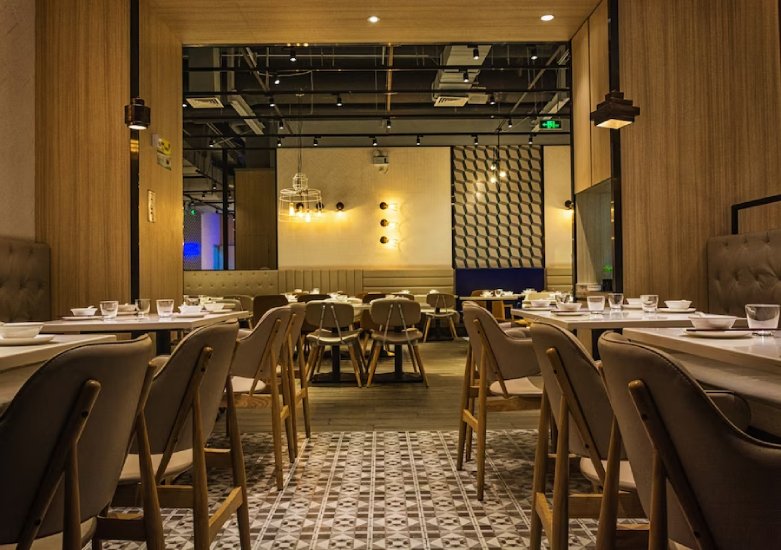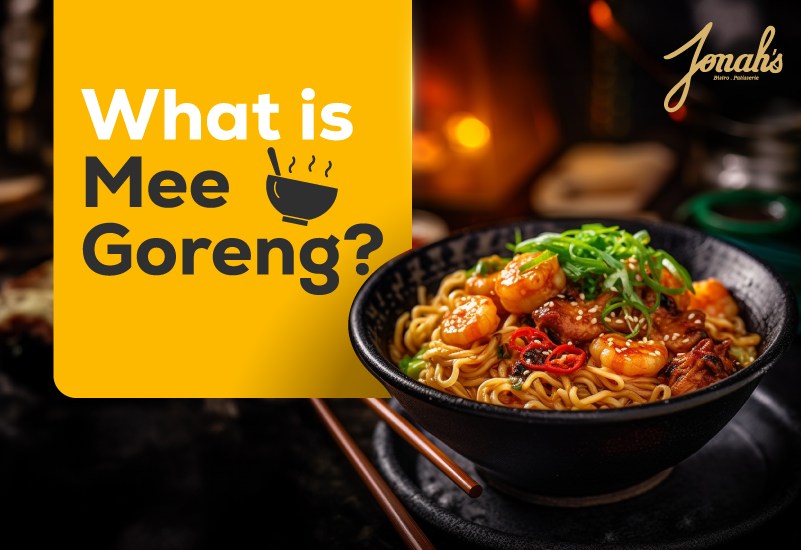Asian cuisine is full of vibrant flavours and mouthwatering spices. If you are already a fan of Asian cuisine, then it’s time you discover one of Southeast Asia’s most prized food recommendations- Mee Goreng.
Mee Goreng is a classic noodle dish from Malaysia and Indonesia that comes with a tantalising blend of flavour, colours, and textures.
But exactly what is Mee Goreng? Consider it the life and soul of the party in the world of street food: a sizzling stir-fry of noodles, fresh veggies, delicious meats, and an exquisite combination of spices and sauces.
This one will transport your taste buds straight to the colourful and busy streets of southeast Asia to Singapore, Malaysia and Indonesia.
So, whether you are a new foodie or a seasoned spice connoisseur, this blog will give you everything you need to know about this extremely famous and widely enjoyed dish!
You Need to Know about Mee Goreng?

Mee Goreng is a popular Southeast Asian dish, especially in Malaysia, Indonesia and Singapore. Mee Goreng, which translates to “fried noodles” in Malay, is a dish made with a harmonious blend of sauces and spices.
It’s a thick and delicious stir-fried noodle dish. Fried egg noodles are usually accompanied by a variety of ingredients, including vegetables, tofu, shrimp, chicken and beef.
The noodles are seasoned with various spices, sauces and condiments, including soy sauce, chilli paste, garlic, ginger and lime juice, giving the dish a sweet, salty, spicy and tangy taste.
Mee Goreng is often garnished with fresh herbs, such as cilantro or spring onions, and served with a side of lime wedges.
The Origin and History of Mee Goreng

Mee Goreng’s history is as rich and varied just like its flavours. This popular Indonesian cuisine originated in the busy streets of twentieth-century Southeast Asia in Penang, Malaysia. It evolved as a result of cultural interaction and culinary innovation.
The origins of Mee Goreng can be traced back to Indonesian-Chinese cuisine, a mix of Chinese cooking techniques and Indonesian ingredients. It is believed that it was invented by Indian Muslim immigrants who adapted a Chinese dish called chow mein to suit local tastes.
Mee Goreng saw plenty of regional changes over the years as it moved from street stalls to neighbourhood restaurants, each influenced by the ingredients readily accessible along with the cultural preferences of that region.
Here are some key events in the history of mee goreng:
Early 20th century: Mee Goreng is believed to have originated in Penang, Malaysia when Indian Muslim immigrants adapted the Chinese cuisine chow mein to local tastes.
1970s: Ting Choon Teng and chef Quek Ah Ai of Singapore create a famous variant of mee goreng. This version includes fish, bean sprouts, coriander, and a 12-herb and spice sambal sauce.
1980s: Indomie, a popular brand of instant mee goreng, is introduced in Indonesia. Indomie becomes so famous that it is often referred to as “Indonesia’s national noodle.”
Today, this cherished meal has crossed international boundaries and can be found in many places, as proof of its popularity on a global scale.
Ingredients and Key Components of the Dish

This Indonesian delicacy is fundamentally made up of a blend of flavours that combine to produce this savoury, sweet and spicy treat.
Here’s a look at the key ingredients that go into making Mee Goreng such a memorable culinary experience:
Noodles
The choice of noodles is the foundation of Mee Goreng. Typically, egg noodles or wheat noodles provide the chewy and delicious base that soaks up all the sauce.
Vegetables
A vibrant mix of veggies gives the dish more texture and nutrition. Common ingredients include cabbage, carrots, bell peppers, bean sprouts, and scallions, which add a light crunch and bright colours to the dish.
Protein
Mee Goreng offers a range of protein alternatives to suit various tastes. The protein ingredient gives the dish depth and substance, be it succulent shrimp, tender chicken, or chewy tofu.
Sauce
The sauce is the heart and soul of Mee Goreng. A mixture of soy sauce, sweet soy sauce (kecap manis), chilli paste, and various spices combine to create a well-balanced symphony of flavours – sweet, savoury, tangy, and a hint of heat.
Garnishes
The meal is improved in terms of both flavour and look with a finishing garnish. Freshness and aromatic elements like chopped cilantro, fried shallots, and lime juice are added to the dish.
These key ingredients contribute to the absolutely delicious and lip-smacking taste of Mee Goreng worldwide.
Flavour Profile and Texture of Mee Goreng
The appeal of mee goreng goes beyond its vibrant appearance; it is a culinary experience that delights both the palate and the senses. The flavour and texture of the dish are a beautiful blend of contrasts that come together to make a truly memorable meal.
Flavour profile
Mee Goreng has an intriguing flavour profile combining sweet, savoury, tangy, and spice. The umami-rich soy sauce provides a rich, savoury base and sweet soy sauce (kecap manis), while the chilli paste adds a light kick of heat.
The tanginess of the lime and the complexity of the numerous spices counteract this, creating a symphony of flavours that make an everlasting impression on your taste senses.
Texture
The texture of Mee Goreng is something that makes it very popular. The perfectly-cooked noodles come with a satisfying chewiness that pairs well with the crunch of fresh vegetables like cabbage and bean sprouts.
Whatever the protein is— shrimp, chicken or tofu—it adds a soft and hearty element to the dish. The final touch of fried shallots and cilantro provides a delicate crispness and aromatic flair.
Somehow, Mee Goreng manages to be a comfort meal during busy days while also having a festive feel to it during special occasions. It’s simply the best meal to comfort your soul!
How to Enjoy a Mee Goreng the Authentic Way?

When it comes to enjoying Mee Goreng, it’s usually recommended to experience the authentic way of eating it to fully appreciate the culture and enjoy the dish for what it is.
So, here are some points to keep in mind if you wish to truly enjoy the dish like a local:
- To enhance the authenticity of your meal, serve your Mee Goreng with authentic Indonesian side dishes. Choose krupuk (crispy shrimp crackers), acar (pickled vegetables) and sambal (hot chilli paste) as your sides.
- Due to its origins in Mamak stalls run by Malaysia’s Indian Muslim population, Mee Goreng does not adhere to the custom of using chopsticks. In this culinary context, eating these noodles with a fork and spoon is normal.
- Mee Goreng is typically served as a one-dish meal, combining noodles, vegetables, protein, and sauce. To enjoy it authentically, mix all the ingredients thoroughly before taking your first bite. This ensures that the flavours are evenly distributed throughout the dish.
From Italian to Asian, Jonah’s Bistro has it all!

Are you ready to enjoy the tempting world of Indonesian flavours at Jonah’s Bistro?
Delight in the aromatic spices of Mee Goreng, from the perfect balance of sweet and savoury to satisfying textures. With a warm and inviting atmosphere, Jonah’s Bistro provides a beautiful dining experience that brings the essence of Indonesia and other parts of Asia to your table.
Come and experience the artistry and flavours of authentic Asian cuisine at Jonah’s Bistro!
Conclusion
Now that you’ve learned quite a bit about this delicious food, it’s time to expand your culinary horizons.
Mee Goreng has won the hearts and taste buds of food fans all around the world, from the bustling food markets of Kuala Lumpur to the lively street stalls of Jakarta!
So gather your ingredients, heat the wok, and let the tantalising aroma of Mee Goreng take over your kitchen.
Whether you’re opting for a vegetarian version or embracing the fiery flavours of spicy sambal, Mee Goreng is a dish that will ignite your senses and leave you craving more.
Frequently Asked Questions (FAQs)
- What does Mee Goreng taste like?
Mee Goreng is a combination of sweet, salty, and spicy, all in one! Though influenced by Chinese cuisine, it has strong Indonesian flavours that use a sweet soy sauce along with spicy sambal.
- What is Mee Goreng sauce made of?
The sauce in Mee Goreng can be homemade and usually consists of these ingredients- light soy sauce, kecap manis (sweet soy sauce), oyster sauce, sesame oil, tomato paste, sambal and white vinegar.
- Is Mee Goreng spicy?
Yes, Mee Goreng is a spicy noodle dish from Indonesia that is also widely popular in Malaysia and Singapore. However, it’s not spicy to the level that it is intolerable.
- Is Mee Goreng suitable for vegetarians?
Yes, definitely. If you choose not to add any kind of meat or egg to the dish, it automatically becomes vegetarian-friendly.
- Is Mee Goreng healthy?
Due to its high calorie, fat, and sodium content, Mee Goreng is usually not regarded as a healthy option. However, it can be made healthier by using handmade or veggie noodles, low-sodium spices, lean protein, and more greens and vegetables.



